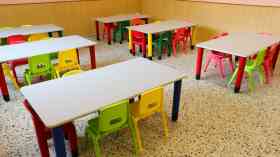
Health and safety during events
School buildings and other education settings are often used for events. But how can health and safety be assured when these take place? Jeanette Harris, committee member of the Institution of Occupational Safety and Health’s Education Group, takes a closer look
Working in education is a very fast changing environment with lots of different events and functions that can occur on site. Examples could include one-off open public exhibitions to small group regular night classes.
It is very easy to fail to assess and manage the risk when running an event because people often fail to understand their legal duties on health and safety. A wide variety of different events happen in education settings, with the risk that the organisation can fail to review processes in managing an event as they believe their risk assessment and processes cover the event.
The Health and Safety Executive states the organiser has a duty to plan, manage and monitor the event to ensure all staff, pupils and visitors are not exposed to health and safety risks.
It is important in planning stages to look how an event will be managed before, during and after, and be prepared for managing incidents and emergencies.
Before and during the event
When starting to plan for the event, it is important to decide the health and safety arrangement required.
The key here is ownership: who will manage the event and who else will help to achieve a safe and successful event. This may be senior leadership, heads of department, catering, IT, facilities or specialist teaching teams. Whoever it is, it is important to have competent employees managing the event.
Creating a safety plan is a great way to start looking at the details of the event and help to identify the risk and what controls will be put in place to manage these hazards. It is also essential that the relevant people are consulted and have the relevant information before, during and after the event.
Examples of things which could be included in the safety plan are details on what the event is and how many people will be attending. Fire management should be considered, and find out what the maximum number allowed to be in the event area is.
Find out whether students will be onsite during the event. If yes, what safeguarding controls are required to ensure the students safety? Data protection issues should also be considered.
Include details on the location and time of day of the event and how long it lasts. Does the weather forecast need to be considered?
Also include what equipment will be used. Has the equipment been serviced and inspected, for example PAT for electrical equipment?
Staff considerations
The safety plan should also include what staff will be required to run the event and how many are needed. What training and experience do they have? Do they require further training?
Ask yourself what health and safety arrangements are in place to control risks, and ensure cooperation and proper coordination of work activities.
Provide your employees and others with relevant information on any risks to their health and safety.
Ask yourself what emergency arrangements are in place and are there competent staff on site during the event? What emergency is likely to happen? Has the emergency procedure been communicated to relevant personnel and visitors if required? Do any external agencies need to be contacted?
Monitor health and safety compliance to ensure methods are agreed for controlling risk and ensure they are working.
You should also review your health and safety arrangements including reviewing the risk assessment for the event. Roles and responsibilities should also be assigned.
Risk assessment
Gathering this information will help you to carry out a risk assessment for the event. The risk assessment should identify who and how someone could be harmed and the controls which are being put in place to reduce the risks. The employer has a duty to share the detail of the risk assessment with the relevant people involved in the event.
It is also good practice to consult with all relevant employees and visitors/organisers relevant to the event. There may be important information exchanged, for example the estates/site department may have a maintenance issue which hasn’t been addressed due to budget issues which may lead to an unsafe environment. It is vital that such information is communicated.
It is also important that any works be completed prior to an event, particularly if they pose a health and safety risk. As per normal procedures, if internal or external services from a contractor is needed it is important to check they are competent (they has enough knowledge, training and experience) to provide a safe service.
Workplace welfare facilities also should be considered, such as first aid arrangements, toilets and hand washing facilities, including their locations and access for disabled users. Also consider temperature of the area, lighting, and parking. Think about the provision of drinking water, access to food, a rest area for staff, fire assembly, and emergency contact information.
A formal hire agreement should be in place for the event. This should include rules, insurance details and restrictions, and agreement that they’ve seen fire procedures and DBS if relevant, and so on.
Consideration is also needed for hirer’s own equipment and PAT testing, licences, food hygiene, competencies or relevant training. It must also be clear who is responsible for monitoring safety, safeguarding and security throughout the event.
After the event
As a follow-up, it is important to always review how the event went. What went well, what went wrong and what lessons which could be learned for future events?
Once the debrief from the event has occurred, the information should then be communicated with the relevant people.
Communication and consultation are crucial to help ensure events are successful and safe for all, and of course we strive to use lessons learned for continuous improvement from all operational aspects, particularly regarding health and safety.
Latest News
18/12/2025 - 09:25
The UK will be rejoining the Erasmus programme in 2027, following a package of agreements with the EU.
17/12/2025 - 09:31
Ofqual has fined exam board Pearson more than £2 million in total for serious breaches in three separate cases between 2019 and 2023 which collectively affected tens of thousands of students.
16/12/2025 - 09:19
The average funding rates will increase by 4.3% for under 2s, and by almost 5% for 3-and-4-year-olds.
15/12/2025 - 10:30
Local colleges are set to receive £570 million in government funding to expand training facilities in areas such as construction and engineering.
12/12/2025 - 11:39
The government has announced at least £3 billion to create tens of thousands of new specialist SEND places in mainstream schools.







